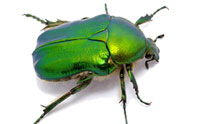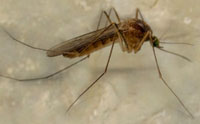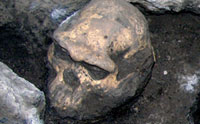When a local fisherman hauled in a strange-looking blue fish off the South African coast, he had no clue about the significance of his find. …read more Read more here: AIG Daily
Black Beauty may tell the tale of the Red Planet’s youth. …read more Read more here: AIG Daily
Creationist predictions confirmed, evolutionist predictions confounded by Messenger spacecraft orbiting Mercury. …read more Read more here: creation.com
Scientists age-dated a cache of stone-tipped throwing spears from Ethiopia’s Gademotta Formation at 280,000 years old. This find appears to pierce the conventional story of human evolution—a narrative about modern man evolving from some pre-human type only 200,000 years ago. How will this date discrepancy be resolved? More… …read more Read more here: icr.org
Do smart crows reveal an alternate evolutionary path to intelligence? …read more Read more here: AIG Daily
Fossil has paleobotanists puzzling over the evolutionary origin of floral pollen. …read more Read more here: AIG Daily
While neither microbes nor organic compounds have been found, researchers believe they are looking in the right place. …read more Read more here: AIG Daily
Reliable indicators of age in the rocks? …read more Read more here: creation.com
“There are many marvels of designs like this through out nature and evolutionists want us to believe they all happened by chance … give me a break!” Admin Butterfly wings are covered with tiny scales that are marvelously efficient at shedding water—so much so that they are inspiring designers interested in developing water-resistant materials. More… …read more Read more here: icr.org
We’re just one out of millions of planets where life is likely to exist. You’ll hear this claim more and more. Don’t believe it. …read more Read more here: AIG Daily
Kangaroos-created or evolved? The complexity, variety and beauty of God’s creatures serve to glorify the Creator and show His power. …read more Read more here: creation.com
Scientists suggest they have solved the problem of how soft tissues like dinosaur blood vessels could have persisted for millions of years. Do their results really back up that claim? More… …read more Read more here: icr.org
These data provide a compelling alternative to old-earth and evolutionary explanations for molecular diversity, and they challenge the millions-of-years timescale common to these models. …read more Read more here: AIG Daily
Grandma Primate, What good eyes you have! “The better to see snakes,” evolutionists suggest. …read more Read more here: AIG Daily
ABC toxins invade insects through bacteria, killing the host in two days’ time. Did the good Creator God of Scripture invent this evil insect interplay? More… …read more Read more here: icr.org
What should Christians do with fossil thorns dated as being millions of years old? …read more Read more here: creation.com
The discovery of fresh blood in a spectacular mosquito fossil strongly contradicts its own “scientific” age assignment of 46 million years. What dating method did scientists use, and did it really generate reliable results? More… …read more Read more here: icr.org
With a little practice it’s possible to know the time of night, just by looking at the stars. …read more Read more here: AIG Daily
How can something long known to be living, be dubbed a ‘living fossil’? …read more Read more here: creation.com
A site in Dmanisi, in the country of Georgia, yielded skulls reported to be the earliest human fossils found outside Africa. The researchers asserted that “skull 5” is so different from other humans that it significantly widens the range of variation within ancient mankind. However, seven observations question whether or not skull 5 was really human. More… …read more Read more here: icr.org
Answering criticisms. …read more Read more here: creation.com
An international team recently announced discovery of the most distant galaxy ever seen and claimed they were viewing this galaxy at “an epoch only 700 million years after the Big Bang.” How does one leap from a distant light measurement to construing millions of years and a Big Bang history? More… …read more Read more here: icr.org
In spite of what the tourist sign says. …read more Read more here: creation.com
Blue stars shine so brightly that they should burn up their fuel in just a few million years. But they’re still everywhere, as if recently created. …read more Read more here: AIG Daily
Archaeopteryx gets its walking papers at Los Angeles conference. …read more Read more here: AIG Daily
God’s creation of the universe is vital, so atheists attack it furiously. But their attacks equivocate about the word ‘nothing’. Space with the ability to quantum-fluctuate is not ‘nothing’. …read more Read more here: creation.com
Microbially induced sedimentary structures (MISS) in ancient Australian Archean rock match marks made by modern microbes. …read more Read more here: AIG Daily











































